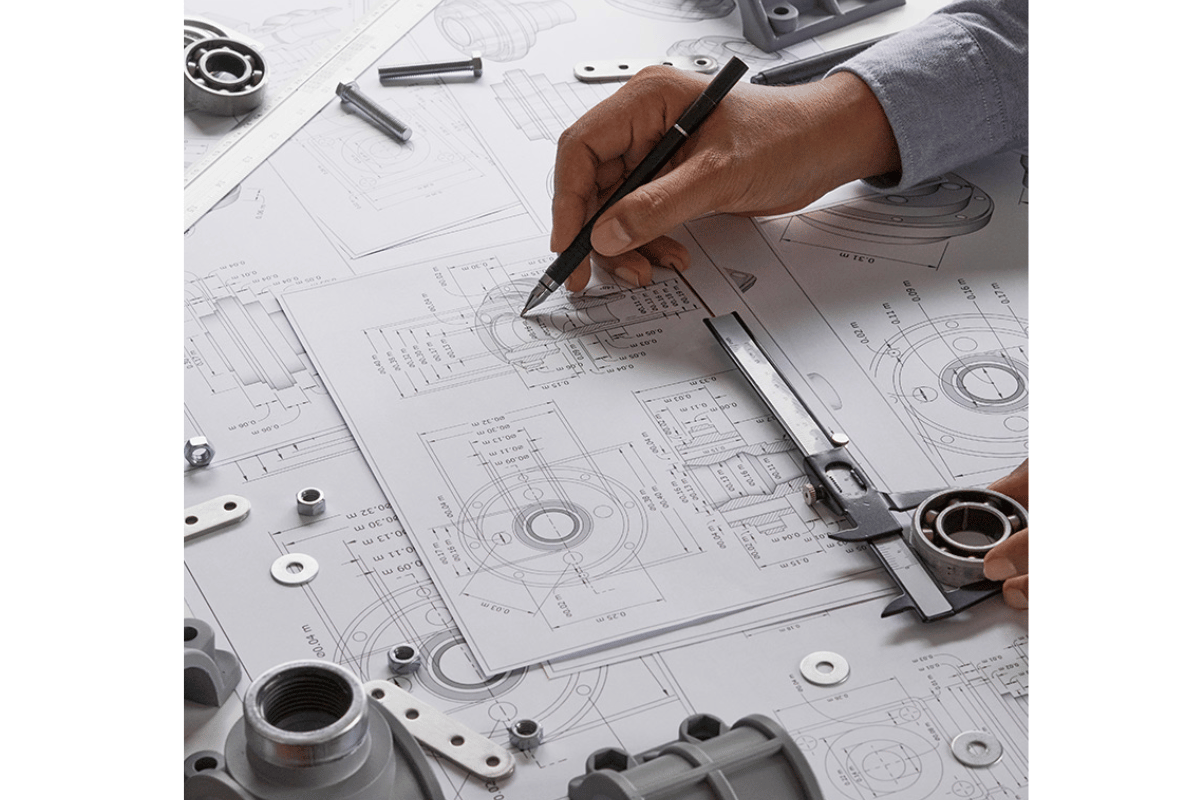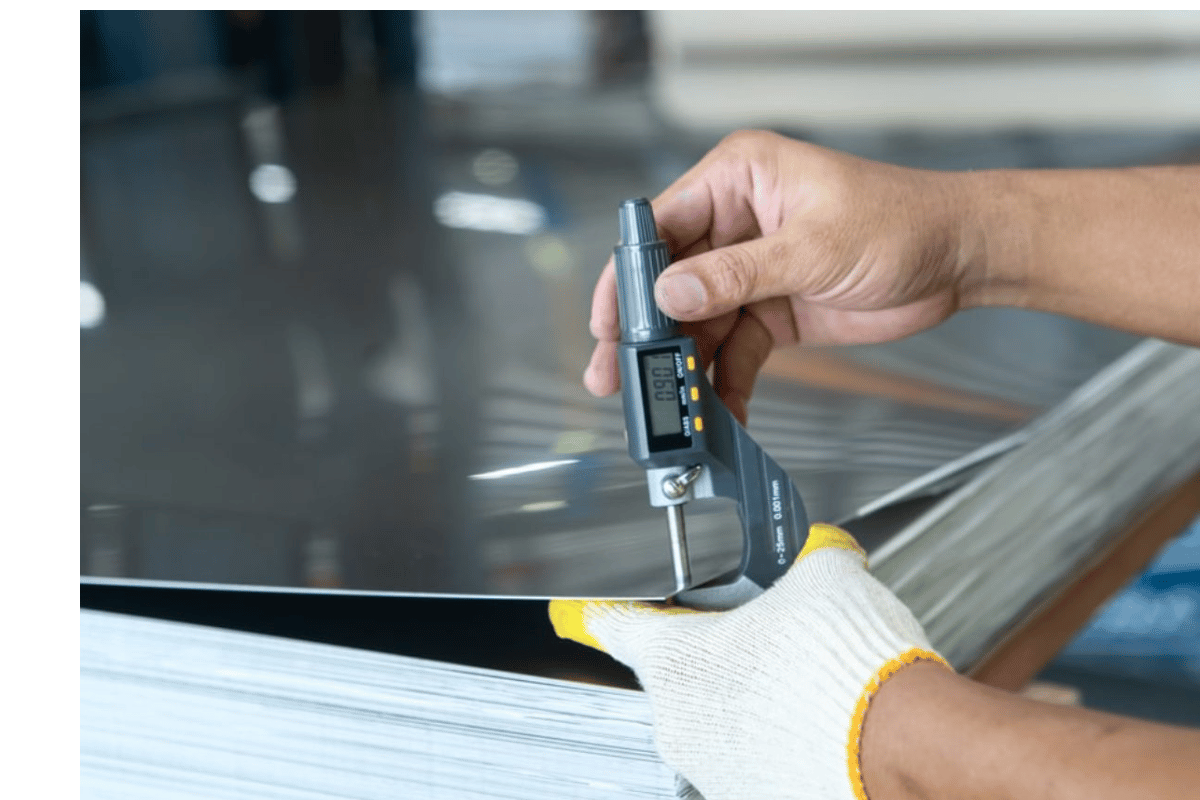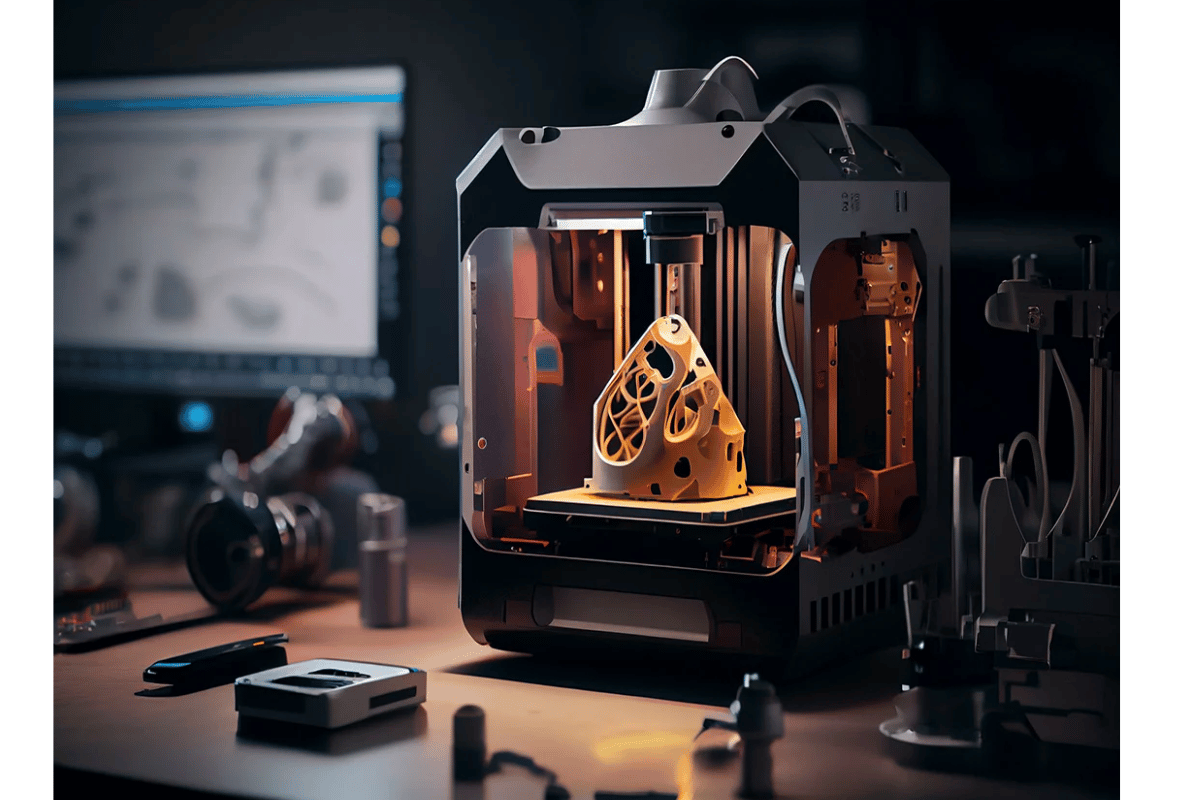Manufacturing and mechanical engineering world are not complete without drilling and tapping. They are the two most critical processes that come into play when it comes to the making of precision components. The objective of this paper is to provide an all-inclusive comprehension of these basic techniques, with a focus on what differentiates a tapped hole from a threaded one. Whether you’re new in the field or already an expert, understanding these nuances can make you more efficient in producing high-quality parts and assemblies. We will cover fundamentals of drilling and tapping, study tapped holes versus threaded holes which have unique characteristics as well as applications, explore necessary tools and best approaches for achieving optimum results. In this detailed analysis, readers will therefore be able to make informed decisions on the best methods for their specific requirements.
What is the Difference Between Tapped Holes and Threaded Holes?
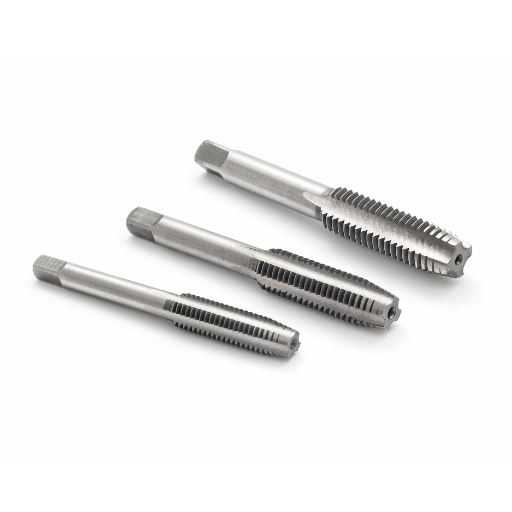
This is a great question that really shows the subtleties of manufacturing techniques. In my capacity as an industry expert I am often asked about the difference between tapped holes and threaded holes.
- Definition: A tapped hole essentially refers to a predrilled hole that has been put up with internal threads using a tool called a tap. This makes it easier to fasten screws or bolts into the material securely. Contrarily, threaded hole simply implies any bore lined with thread whether formed through tapping, threading by use of self-tapping screw or via various methods like thread milling.
- Creation Process: Tapped holes are made by first drilling with specific diameter (usually smaller than the bolt or screw size) and then threading inside with taps. Tunneling in thread mills, applying self-tapping fasteners that make their own threads while they are being driven into it are some of the ways used in making threaded holes.
- Tools Involved: Typically for tapped holes, there are two major tools involved which include drill bit and tap. Drill bit creates the initial hole while tap cuts into the thread on its way down. As for threaded holes, you might need several tools other than taps such as thread mills, die heads or even screws designed to form threads as they are driven into the mat
How to Machine Perfect Tapped or Threaded Holes
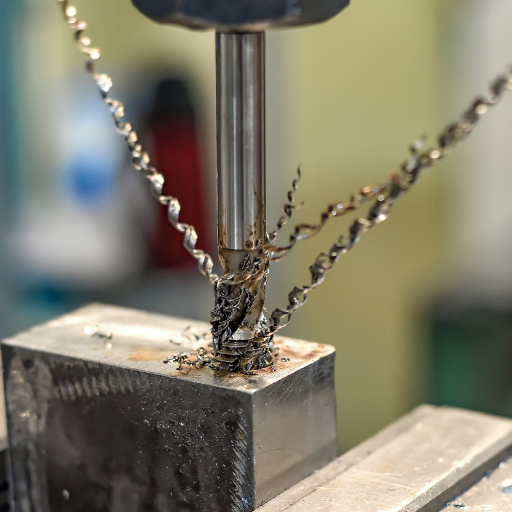
I have been working in this field for a while and would like to tell you that machining perfect tapped or threaded holes is only about precision and attention to details. The first thing is choosing the correct drill bit size, which is very important. If your drill bit is too big, the threads will not have enough material to cling on to making them weak. On the other hand, if it’s too small, you risk snapping off the tap or generating extremely tight threading. Always consult a drill size chart for materials and specific thread when you are not sure.
Further on, don’t forget about lubrication. It facilitates reducing frictional forces via good cutting oil application hence it enables clear cuts and extends the tool life as well. Regarding actual tapping process ensure that tap aligns perfectly perpendicular with work surface. Possible deviations result into poorly aligned threads that are weak and unreliable.You should also use a steady motion when you tap the hole throughout. Every couple of turns, it’s always a good idea to back out the tap in order to get rid of chips from within the hole. In this way binding and breakage of tap would be prevented.
Here are some key parameters:
- Drill Bit Size: Please see standard drill sizes for specific thread type/material.
- Lubrication: High-quality cutting oil applied generously.
- Tool Alignment: Must be at right angles to work surface.
- Tapping Motion: Continous rotation with periodic backing-out for chip clearance
Finally, always check your finished threads carefully. Use a thread gauge to verify fit and a magnifying glass to check cleanliness and form of threads themselves after finishing them up. This process takes time but these basic instructions will give you great results every time you perform it properly.
Choosing the Right Tap and Drill Bit
The choice of the tap and drill bits is crucial in creating accurate threads in any material. It is a good idea to understand these parameters well if you want to maximize the success rate. Let’s look at each of them:
- Drill Bit Size:The size of your drill bit must go together with the needs of the specific thread that one wants to tap. The use of a large drill bit will result in loose threads while a tiny one may break or produce hard threads. Consult a suitable drilling chart for your type of material and size.
- Lubrication:To minimize friction and heat during surface treatment, apply proper lubrication. With use of cutting oil of high quality, you can easily cut, reduce wear on tools as well as obtain cleaner finishes. However, ensure that you generously apply it onto both your drill bit and tap.
- Tool Alignment:Creating aligned and strong threads requires perfect alignment with respect to work surface when performing tapping operations such that the tap is right angles to it. Misaligned tappings create weak/unreliable ones which will fail whenever loaded heavily hence compromising safety. Use guides or fixtures if necessary so that you attain an exact alignment.
- Tapping Motion:A consistent motion helps maintain control over tapping, ensuring equally spaced threads throughout their entire length. Regularly back off the hole by turning less than half way when tapping as this allows chips outside the hole; otherwise they obstruct its progress making binding more likely and breaking possible.
If these aspects are thoroughly considered, then improvements can be made on threaded holes significantly and also increase tool life expectancy.
The Role of CNC Machining in Creating Threaded Components
In the creation of screw-cutting products that require precision and uniformity, CNC machining is very important. This entails computer-controlled machines which can automate drilling and threading processes to ensure uniformity and accuracy.
- Size of the drill bit:
The computer numerically controlled (CNC) machines can be programmed to choose the exact size of drill bit according to the required thread to reduce human error. The right selection makes sure that threads formed are not either too slack or excessively tight thereby adhering perfectly to provided specifications. - Lubrication:
CNC machines are often equipped with programmable automatic lubrication systems which dispense cutting oil whenever required. This automatic lubricating reduces friction as well as heat hence enabling smoother cuts as well as extending life spans for both drills and taps. - Tool alignment:
CNC machining has perfect tool alignment as one of its main benefits. Computer control ensures that the tap is perpendicular to the work surface hence producing consistent threads that are robust. For threaded components, this type of accuracy is essential so that they remain reliable and strong under load conditions. - Tapping motion:
The tapping motion in CNC machines is carried out with unimaginable precision and steadiness. They are programmed to back out periodically in order to clear chips from hole, thus minimizing binding or tap breakage. Such constant tapping results into a well-leveled thread while lowering chance for equipment failure.
When machinists incorporate CNC machining in thread manufacturing process, they can achieve unmatched levels of precision, efficiency, consistency – all these add up towards improving quality of threaded components and increasing lifespan for tools involved in manufacturing them.
Tapping Process: Cutting vs Forming Taps
Two main types of taps, cutting taps and forming taps, are used for tapping.
Cutting Taps:
Threads are created by cutting into the material through the use of cutting taps which is a process that involves removal of material from the workpiece. They can be used for harder materials like steel and cast iron. This method creates small chips or shavings during the tap’s progress into the hole to ensure that there are sharp threads.
Forming Taps:
But forming taps on the other hand deform rather than cut into a material to create threads. By displacing and shaping the material into thread formation, threads with smoother surfaces and better strength are obtained. Such applications are suitable for softer metals such as aluminum or copper. The use of forming taps usually results in faster threading processes and reduces tap failure chances since no chips will be left behind.
In conclusion, whether you chose cutting or forming points on your work piece is guided by two things: what kind of characteristics one wants their pipe to exhibit; and what type of material they aim at using it on. Cutting taps are versatile and appropriate for harder materials whereas forming ones make stronger finer threads ideal when working with soft metals thus improving overall thread integrity.
CNC Machining: From Blind Holes to Through Holes
Both blind holes and through holes are created by CNC machining with great precision. These types of holes are useful in cases where a surface needs to be kept whole on one side. To prevent any unexpected breakthrough, the depth of blind holes is precisely controlled by computer numerical control (CNC) machines. On the other hand, through holes go right through the material. They are vital for applications that need attachment or alignment with another part. Through-holes which are clean and have precise diameters help in maintaining assembly accuracy, an attribute required by CNC technology. Skill in creating both blind and through holes in CNC machining plays a fundamental role in developing intricate and high-quality components.
Blind Holes vs Through Holes: A Comparison
Several things have to be taken into account before comparing blind holes with through holes, these include the application demands, the manufacturing complexity and the cost. In some cases where one side of the material must be preserved intact, blind holes becomes very beneficial for maintaining surface integrity and aesthetics. They often require more accurate depth control which can make manufacturing more complicated and costly. Conversely, through holes are usually easier to machine because they go right across them. This makes them easier to manufacture and generally cheaper than those requiring a closed end. They are necessary in constructions that need strong fastenings or precise alignments. The choice between blind holes and through-holes is therefore determined by project requirements depending on balancing functional needs against manufacturing considerations.
Using CNC Machine for Precise Hole Making
What I used to do in my manufacturing projects has changed forever due to CNC machines, which are great for making precise holes. The accuracy and repeatability of CNC technology is unparalleled, making it crucial when working with components that require tight tolerances. We can program the depth of blind holes so that no material is damaged on the opposite sides. Such fine accuracy is very important in projects where surface integrity matters most. However, through holes benefit from this machine’s capacity to hold diameters consistently and achieve a smooth finish, thereby improving assembly as well as aligning precision. Consequently, swapping between different tool types and sizes seamlessly within one setup reduces downtime while increasing efficiency. In this manner, CNC machining has greatly improved the quality and uniformity of parts I produce; hence enabling me to meet project requirements at times exceeding beforehand.
Types of CNC Machines Used for Drilling and Tapping
In relation to drilling and tapping, various CNC machines can be used in achieving high precision as well as efficiency. There are different kinds that have applications for them, specific parameters suitable for them, and also benefits:
CNC Milling Machines:
- Versatility: These types of machines are highly flexible and can handle various tasks ranging from simple drilling to complex contouring and tapping.
- Accuracy: Their precision is very high meaning that the holes drilled will be of the right depth and location.
- Speed: They quickly perform operations due to their fast spindle speeds and feed rates.
- Tool Variety: These machines can combine multiple tools such as drills, taps, end mills in one setting.
CNC Drilling Machines:
- Dedicated Function: They possess particular functions of drilling only hence they come with features specifically designed for this purpose.
- High-Speed Spindle: Such models have quick spindles which makes drilling efficient.
- Multi-Spindle Options: Some models feature more than one spindles thus enabling simultaneous or rapid succession hole drilling among others.
CNC Tapping Centers:
- Specialization: Tapping centers are dedicated to thread cutting processes hence the spindle functions optimization is aimed at this need alone.
- Tapping Speed and Precision: High-speed tapping ability combined with precise thread cutting accuracy is featured on these devices.
- Rigid Tapping: It synchronizes the spindles’ speed with the feed rate so as to prevent damaging of the threads by minimizing tearing during threading process.
CNC Gantry Machines:
- Large Work Area : This type of machine is perfect for big components which require long areas where both drilling and tapping occur simultaneously .
- Heavy-Duty : These machines usually have strong frames capable or handling large pieces of materials without too much vibration being realized .
CNC Swiss-Type Lathes:
- Small, Precise Components : They are ideal for small components requiring turning that includes elements of drilling or tapping
- High Precision: Highly precise system renowned for maintaining tight tolerances on small parts.
By knowing these parameters and selecting the right CNC machine for drilling and tapping, it is possible to enhance significantly your project outcomes. Each type of machinery has particular manufacturing needs that it best addresses thus being ideal in all operations through guaranteeing accuracy, effectiveness and efficiency.
Fasteners: Screws, Bolts, and the Importance of Thread Size
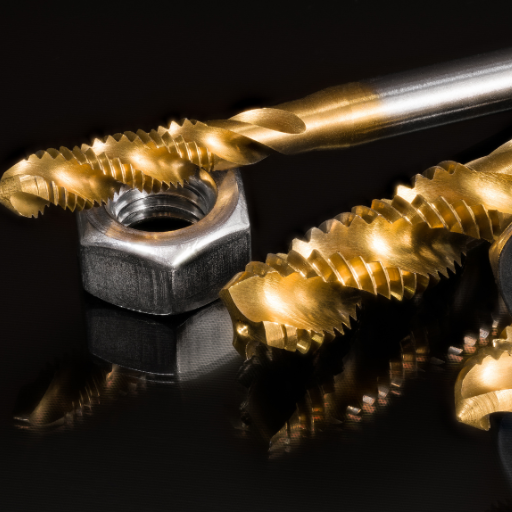
The unique feature of fasteners is their ability to hold things together. Commonly used fasteners include screws and bolts that differ in various applications as well as designs. Screws are often driven into the material to create its own thread hence tightening it. On the other hand, bolts are normally used together with nuts and pre-threaded holes in order to hold materials together which provides more force of clamping.
In the case where one is using screws alongside bolts, thread size becomes a very important factor since it determines how to properly fit such fastening devices as well as strength and distribution of loads over them. Properly sized threads ensure that they can be used under applied forces without stripping out or failing. Inaccurate thread sizes could result in loose fits, reduced structural strength or even failure at the joint itself. Therefore, appropriate choice of thread size is fundamental for safety, durability and performance in any fastening application.
Choosing the Right Screw or Bolt for Your Threaded Hole
Selecting the right screw or bolt for your threaded hole involves consideration for factors I usually look at to make sure that they fit well. One by one, here are the aspects I focus on:
- Thread Type: The thread type of the screw or bolt must tally with the type of threads in your hole. For instance, metric threads cannot be substituted with inch based threads and vice versa. However, compatibility ensures that cross-threading doesn’t occur which might damage both the fastener and the hole.
- Thread Size: This is followed by thread size indicated as pitch for metric units while imperial uses threads per inch. As such, I need to confirm whether my screw or bolt has a similar thread size as that of my hole for structural integrity. This means that it should be strong enough so as not to strip out when forces are applied onto it.
- Length: When it comes to screws, length matters because I want them to go deep into the material and secure very well but not too much that they stick out abnormally or knock another part there. With bolts, however, I measure length so that it fits through materials with some extra thread left to engage the nut appropriately.
- Material Compatibility: Fastener’s construction material can also determine its durability. In stressful cases like those of aircraft assembly work, high-grade steel or alloys with unique properties will come in handy; otherwise stainless steel may offer corrosion resistance while coated fasteners can be used in environments where rust is feared.
- Head Type: Depending on what you want them to do, different head types are chosen. A countersunk head is suitable for flush surface finishes while pan heads offer more clamping force in applications where required.
- Strength Grade: The grade of strength for most bolts is shown by numerals on their heads (e.g., 8.8, 10.9 in case of metric bolts). With this information about strength grade then one will know if their bolt can take in the challenges that it is going be exposed to while being used.
Using my approach above, I can confidently select the right screw or bolt for any threaded hole I have. By being cautious about such details, this assembly will be stable, trustworthy as well as appropriate for use.
The Importance of Correct Thread Size and Pitch
For any assembly, it is vital to select the right thread size and pitch, so as to have a secure and reliable joint. This article highlights the critical parameters that should be taken into account when choosing an appropriate thread size and pitch:
- Fit: There must be a match between the thread size and pitch with those of their respective nuts or threaded holes in order to provide a tight fit. Wrong sizing may result in loose connections or damage to devices hence resulting in failure under load.
- Load-Bearing Capacity: An appropriate thread size and pitch are important contributors for the fastener’s ability to bear loads. Heavier threads with finer pitches generally confer more strength and resist striping better when used under high stress conditions.
- Material Thickness: The selected thread size and pitch should be consistent with the thickness of materials being joined. Fine threads are preferred for thin materials because they enable more gripping power while hard ones work best on thicker materials.
- Application Environment: Different applications may need different thread specifications; for instance, automotive and aerospace industries usually employ specific thread sizes together with pitches that are standardized so as to maintain uniformity in performance as well as safety levels.
- Ease of Installation: Although fine threads are stronger, they can be difficult to get started properly. Coarser threads are easier for starting purposes thus preferred where assembly and disassembly is done frequently.
- Compatibility With Existing Standards: It is essential that industry standard compliant thread sizes and pitches are employed for ease of maintenance activities such as replacements. In this way, it ensures ready availability of replacement parts that fit without modification.
Following these guidelines will help ensure proper selection of threading sizes which leads to strong bonds during manufacture making it safe, durable, permanent design process.
How to Determine the Ideal Fastener for Tapped Holes
Afterwards, I go on to consider where the fastener is employed. In industries like car manufacturing or aerospace which are usually under high pressure condition, I prefered to stick to common thread sizes and pitches so as not only ensure its consistency in performance but also maintain safety. For applications requiring frequent detachment and assembly processes I use coarse threads because they are easier to align and install rapidly.
In addition, one has also got to assess whether a given fastener matches with existing standards hence ensuring easy sourcing of replacements that can be installed with no modifications required. This saves time as well as simplifying future maintenance jobs.
In conclusion, by using this systematic approach, I am able to confidently select a fastener that meets all of the critical parameters leading towards a safe and efficient assembly process.
The Step-by-Step Guide to Drilling and Tapping Holes
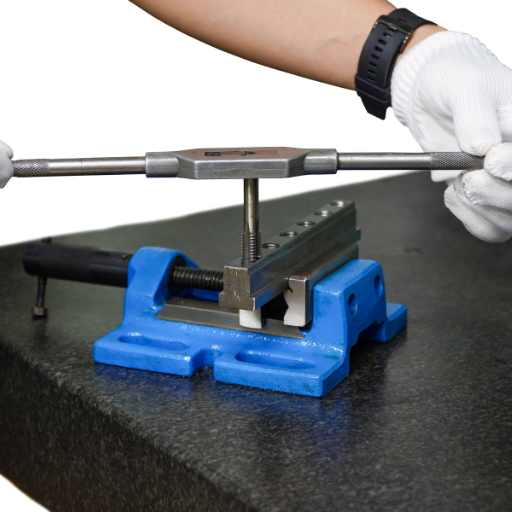
Drilling and tapping holes is a fundamental process in creating threaded openings for bolts and screws. To ensure accuracy and efficiency, follow these detailed steps:
Preparing the Hole: Drilling and the Use of a Pilot Hole
Although drilling of a pilot hole is important for ensuring that your final hole is accurate and neat, there are some key factors you need to analyze
- Drill Bit Size: Your drill bit size should be compatible with the final hole you want to create. Using the wrong size may result in an oversized or undersized hole, thus compromising on the thread integrity.
- Material Compatibility: Different materials necessitate distinct types of drill bits. An example is wood, metal and plastic. Each one has its unique properties which would require their own specific kind of drill bits. A wrong type of drill bit may bring about breakage or poor quality holes.
- Proper Lubrication: Cooling lubricants are essential if you want to decrease heat friction between the tool and work piece, during metal cutting operation otherwise it could break easily. Metal machining operations usually use either oils or cutting fluids. Always apply a proper amount of lubricant according to the material being drilled into.
- Drill Speed and Pressure: Steady pressure combined with a constant speed maintains a whole even though preventing damage to the drill bit itself. Higher speeds produce more heat that can dull or break harder bits especially.
When you drill a pilot hole, this means that you are beginning by making smaller preliminary holes that will guide larger ones through so as to avoid misalignment. This step becomes particularly useful when dealing with harder materials or greater precision must be achieved. By doing these things right, both your pilot hole and hence final hole shall be very precise and dependable; thereby providing you with a strong fit for your fasteners.
Tapping Process: The Right Way to Create Internal Threads
In the initial stages of my experience with the tapping process, I experienced some breakdown in its essential parameters and their nature. It makes it a lot easier to understand and justify each step.
The Right Tap: The first thing I do is select the right tap for the job. There are different types of taps, like taper taps, plug taps, and bottoming taps. Each type serves a specific purpose:
- Taper Tap: It’s great for starting a new thread because its tapered shape gradually cuts into the material.
- Plug Tap: This is used after a taper tap and has fewer tapered threads, making it ideal for deeper threading.
- Bottoming Tap: I use this when creating threads close to the bottom of a blind hole because it has very little taper and cuts fully to the bottom.
Aligning The Tap: Alignment is crucial. I ensure the tap is perpendicular to the surface of the material. Even a slight tilt can lead to misaligned threads, which can compromise fastening’s integrity.
Lubrication: Just like drilling,I always use lubricant.I reduce friction and heat buildup through lubrication which prevents breaking of a tap.Metals require cutting oil while soft materials such as aluminum do well with light machine oil
Hand Tapping: For better control,I prefer hand tapping.With steady even pressure,I turn clockwise to cut threads.It’s important at every couple turn in this process that you reverse slightly to break chips.This will avoid jamming and breaking of the tap.
Cleaning The Threads: After tapping, any debris or remaining chips need to be cleared out. I usually use compressed air or a thread cleaning tool to ensure that they are clean and smooth
By carefully following these steps—choosing an appropriate tap, ensuring proper alignment,lubricating,having care on hand tapping,cleaning out-threads–I’ve consistently achieved strong,durable internal threads.
Finishing Touches: Ensuring the Quality of Threaded Holes
These are the five essential steps to ensure that the quality of threaded holes is maintained: The following sections will elaborate further on these points.
- Deburring: The threads that were just formed during tapping leave behind burrs or sharp edges. To enhance safety and performance, these burrs must be eliminated. Generally, I employ deburring instruments or tiny files to softly rectify those rough portions.
- Checking Thread Depth and Pitch: It is vital to ascertain whether the depth and pitch of the threads are accurate. For pitch measurement, I use a thread gauge which should match with the specifications of the fastener being used. On the other hand, depth can be measured using a depth gauge or simply by taking the fastener itself and making sure it sits properly.
- Thread Engagement Check: What I do is try out screwing in with its corresponding fastener into these screws. There should be no resistance while inserting it inside. When excessive friction exists or if it moves around when you insert it, then there may be an issue such as not correctly cutting them or misaligning.
- Strength Testing: Strength testing is very important especially for critical applications where threaded connections are involved. This could involve subjecting the joint secured through it to some form of load so as to verify if it can handle projected stresses without either stripping off or failing completely.
- Surface Finish: In some instances, thread interior’s surface finish matters much more than anything else does. Polishing or otherwise treating these threads may increase their efficiency; eliminate retardation as well as reduce rusting and corrosion threats around them. Such factors might even become crucial to consider on threads exposed within challenging environments.
By considering all this—deburring, verifying thread depth and pitch, checking thread engagement, testing strength, considering surface finish—I make certain that my holes are trustworthy enough for their intended purpose since they bear high quality features.
Tapping Holes vs Creating Threads: Which Technique is Better?
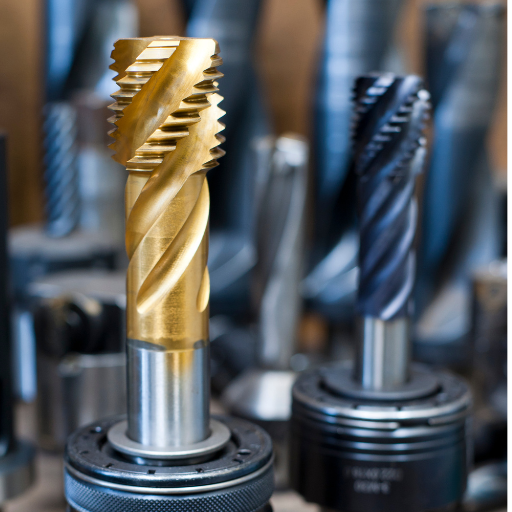
- Material Type: The character of the material I work with often determines my choice. In such materials as aluminum or plastic which are softer, it may be easier to create threads since they can be manipulated more easily. In harder materials like steel, tapping is usually more dependable as it produces an accurate thread profile.
- Thread Precision: Generally, when accuracy of thread is important and tolerances are tight, i prefer using taps. Because of the way they are made, tapped threads are sometimes more uniform and exacting than rolled or cut ones.
- Production Volume: For mass production purposes automated tapping machines save considerable time and labor costs making them very suitable for tapping. However, in case of one-off jobs or low volumes it could be cheaper and more adaptable to make threads manually.
- Load Requirements: Sometimes certain applications require strength in joining by thread. Accordingly tap-threads commonly possess superior mechanical properties, thereby possess higher load bearing capacity and durability. Tapping is therefore often used in heavy duty applications.
- Tooling and Equipment Availability: Sometimes the choice simply comes down to what tools and equipment I have available. If I own a good quality set of taps or even tapping machine it will naturally guide me towards tapping while if provided with tools for cutting threads then that method can be preferred for convenience.
- Ease of Maintenance: Repairs and maintenance operations with tapped threads may not consume much time comparing to other techniques where they were created differently like via rolling or cutting out worn-out areas known as re-threading which takes longer time compared to re-tapping damaged areas This means that such repairs as retapping are simplified where there was presence of tapped threads but it would take quite some time for example rethreading will take much longer than retapping areas having become worn out in any other way.
In essence, although tapping and creating threads have their own advantages, I always make my decision basing on the definite demands of each project. Taking into account material type, thread precision, production volume, load requirements, tooling availability and ease of maintenance will guide me in deciding which method to use for a particular task.
Pros and Cons of Tapping and Creating Threads
It is important to know the pros and cons of both tapping and creating threads so as to make an informed decision based on project needs.
Pros of Tapping
- Accuracy: Generally, threading using taps allows for high accuracy in making threads over and over again.
- Strength: Mechanical properties of tapped threads are usually better than those manufactured by other processes, giving them superior load-bearing capacity.
- Time Factor: Time factor is essential when mass production of a product is in question; thus, tapping is more time effective compared to other methods or techniques used to form a thread.
- Maintenance: It is easier to manage and repair threaded connections that were made using taps rather than the ones created by other means.
Cons of Tapping
- Tooling Cost: It requires certain types of taps and machines which may be quite costly at times.
- Material Limitation: Some materials such as very hard ones or brittle materials are not appropriate for use with taps.
Pros of Creating Threads
- Versatility: Can be done on many different materials for various types of threads too.
- Low Volume Cost Effective: Suitable for one off or small batch jobs where the cost of setting up a tapping machine cannot be justified
- Tool Availability: May only require simpler tools that can already exist within a workshop
Cons of Creating Threads
- Precision Issues: May not necessarily offer the same precision level that can be achieved through tapping in some cases which becomes very critical for some applications
- Duration Requirements: Much more laborious and hence slow due to manual creation especially in large scales where it would have been automated with other methods like Tapping (Gardner et al., 2008).
- Durability:They may not possess similar strengths as compared when under heavy loads.
To sum up, while tapping might be generally more appropriate for highly precise, higher volume and stronger tasks, manual thread creation offers increased flexibility as well as cost effectiveness thus could be preferred in certain situations whereby smaller volumes are involved.
When to Use a Tapped Hole vs a Threaded Hole in Projects
Depending on the project’s specific requirements and constraints, I will choose either a tapped hole or a manually threaded hole. For example, when working on high-precision and high-volume projects, my preference is for tapped holes because of their uniformity and strength that is key for load-bearing applications. Tapping is also ideal for mass production as it saves time and costs in the long run.
On the other hand, I like to manually thread those holes especially when it has to do with custom or low volume projects. This way I have more choices; I can work with different materials and thread types without having to buy specialized machinery which can be expensive. Moreover, smaller workshops or DIYer’s find simple tools required for manual threading readily available making it a practical solution vis-a-vis cost.
Overall, choosing between precision, volume, material appropriateness and cost implications peculiar to every project is difficult.
Making the Decision: Factors to Consider for Your Needs
When I’m stuck between whether to use a tapped hole or a manually threaded hole, I consider several factors that help me reach the best decision for my project. Some of these parameters include:
- Precision Requirements: In instances where precision is important, choosing tapped holes tends to be my typical preference. Tapped holes achieve uniform and consistent threads which are essential in applications requiring narrow tolerances.
- Volume: For high volume production runs, I prefer to work with tapped holes as they can be made fast and repeatedly on a large scale. This efficiency is critical in ensuring low production costs and meeting deadlines.
- Material Type: The material being used can also influence what method of creating holes I choose. Generally, tapping works well for harder materials such as steel or aluminum where there is need for precise threading. However, if softer materials are involved or the approach must be customized then manual threading may suit the situation better.
- Load-Bearing Capacity: When it comes to strength under heavy loads and durability, big companies go with tapped holes more often than not. Threads created by tapping process tend to be stronger and more dependable when it comes to load bearing applications.
- Cost: For small-scale projects or do-it-yourself endeavors; sometimes using manually threaded holes can be cheaper. Usually tools required for manual threading are relatively cheaper and easier to find compared specialized machinery used for tapping.
- Project Flexibility: Custom projects may require considerable flexibility at times. Manually threading allows me move from one thread type to another size wise without necessarily having specialized equipment as such.
Considering these factors—precision requirements, volume, material type, load-bearing capacity, cost and project flexibility—I am able make an informed decision that meets my specific project’s needs This way helps me balance between efficiency, cost-effectiveness and quality of the final product.
Reference sources
1.Source: Xometry – Tapped Holes vs Threaded Holes
- Summary: This online resource from Xometry compares tapped and threaded holes, detailing the differences in the machining processes involved. It explains the distinct tools used for threading and tapping and delves into the technical aspects of creating these types of holes.
2.Source: SendCutSend – Threaded Vs Tapped Holes for Laser Cutting
- Summary: The blog post from SendCutSend explores the specific considerations for laser cutting threaded and tapped holes. It provides insights into the use of cutting taps and self-tapping tools for creating these holes, catering to a technical audience interested in laser cutting applications.
3.Source: Tuofa CNC Machining – Tapped Hole vs Threaded Hole in CNC Machining Service
- Summary: This source offers valuable information about the sizing requirements for taps based on different thread types and sizes in the context of CNC machining. It provides practical guidance for professionals in the machining industry looking to understand the nuances between tapped and threaded holes in CNC applications.
Frequently Asked Questions (FAQs)
Q: What is the difference between tapped holes and threaded holes?
A: The terms tapped holes and threaded holes are often used interchangeably in relation to fastening applications. Tapped holes characteristically denote the drilled holes having internal threads, meant for accepting or being fitted with bolts or screws. Such a process is accomplished by making use of a tap which cuts threads into a drilled hole. Conversely, threaded holes include any hole with internal threads whether they have been tapped using a tap tool or machined to have threads through an alternate method. Therefore, while every tapped hole has thread in it, it does not mean that all threaded holes are actually made by tapping.
Q: How are tapped holes made?
A: To make a tapped hole, start by drilling a hole that is slightly less in size than the thread diameter to be inserted. Then use a tap such as hand, taper, bottoming or plug tap to thread this drilled hole. The kind of tap used depends on the depth and type of hole required which may be through or blind holes. Tapping a hole can be done manually or using CNC machining service depending on whether there are high production volumes needed for accuracy and speed while tapping larger one’s.
Q: What is the difference between blind holes and through holes when tapped?
A: Blind holes and through holes are two types of holes that can be threaded. A blind hole is one which does not pass completely through the workpiece; it has a bottom where the tap stops. Tap depth is critical in this case, and sometimes bottoming taps are needed to make full threads right down near the end of the hole. On the other hand, a through hole goes all the way though. Consequently, it is easier to tap because on exiting, tap can go through another side unlike in most cases where taper or plug taps are used. Choice between tapping blind or through holes often depends on specific requirements of fasteners in an application such as bolts and nuts.
Q: Compared to threaded holes, what are the advantages of using tapped holes?
A: Tapped holes have a lot of advantages compared to the generically threaded ones when it comes to customization as well as precision. For instance, Tapped holes can be customized to hold specific internal thread sizes and patterns that match with corresponding bolts or screws therefore giving a tight and precise fit. This process allows for creating threaded holes in closed designs where a nut cannot be used on the other side for fastening. Additionally, tapping provides flexibility in designing with blind holes or locations where only one side of the panel is accessible. Moreover, custom made threads within tapped holes are able to evenly distribute loads thus; making them stronger and more reliable in highly demanding applications.
Q: Can CNC machining service be used to create tapped holes?
A: Truly, CNC machining services are used in making tapped holes. It is an effective process when it comes to producing accurate, even and consistent threads on different substances. The initial hole can be drilled into the desired size with a CNC machine which then employs the appropriate tap and cut through the hole to create threads of specified dimensions. This mechanization is essential for mass production as well as developing precision components hence widely adopted in industries requiring fine tolerances of tapped holes.
Q: What tools are required to make tapped holes?
A: In the creation of tapped holes, tap and die are often employed. This begins with the selection of an appropriate size drill bit to make a clearance hole or a pilot hole (in case it is a through or blind tap hole). The material is then drilled and within the said hole, threads are carefully cut using one of these tapping tools; hand tap, plug tap, taper tap, bottoming tap. For instance: starting out for making threads as well as ending by making them at the bottom of blind holes. These taps are operated via tools some which are hand-held for small operations while others are automatic for big projects and industries.
Q: Are tapped holes similar to using a nut and bolt?
A: Utilizing tapped holes and fastening through the use of nuts and bolts may have the same goal of making joints secure but differ in terms of assembly as well as design considerations. To do away with the need for a nut, the hole is threaded to form an internal thread into any one of the joined materials, which usually facilitates simpler and more compact assembly. However, it might be a closed design or have limited space; therefore nut and bolt connections demand access from both sides to attach the nut onto the bolt. They are equally effective as fasteners although their suitability for an application will depend on factors such as available space, load requirements and ease of maintenance.
Q: How do you decide the tap size for a drilled hole?
A: Deciding the tap size for a drilled hole mainly depends on the thread size you want to achieve as well as the material being worked upon. Every thread size has a corresponding drill bit diameter which creates best diameter hole for that thread, this called the tap drill size. This is to ensure there is enough material for the tap to cut into without undue force that may damage both the tap and its surrounding material. The recommended drill bit sizes for different thread specifications are listed in tap drill charts provided by manufacturers and engineering handbooks. It is also important to consider the toughness of materials because harder ones require slightly larger hole diameters in order to reduce breakage risk during tapping.



